Where Do Lamb Steaks and Roasts Come From?
Understanding lamb cuts is essential for any home cook seeking to enhance their culinary skills. With so many cuts to choose from, it can be overwhelming to know which one to pick for the perfect meal.
But don’t worry—once you understand the basics, you’ll be cooking lamb like a pro in no time. In this guide, we’ll walk you through the most common lamb cuts and how to select the best one for your dish.
From the rich, tender flavor of the leg to the succulent chops from the rib, each cut offers a unique experience. We’ll also cover cooking methods, so whether you’re roasting, grilling, or braising, you’ll know exactly how to bring out the best in your lamb.
Lamb can be intimidating for some, but with a little knowledge of its cuts, you can transform any meal into something special. Whether you’re preparing a classic roast or a Mediterranean-inspired dish, choosing the right cut will make all the difference in flavor and texture.
So, let’s dive in and explore the cuts of lamb that will take your cooking to the next level!
Lamb Cuts Chart
I thought it would be interesting to look at various lamb steaks and roasts and which cuts are associated with them. The lamb cuts chart above is simple but allows you to see exactly where these cuts come from on the lamb.
This chart represents cuts of lamb from a United States point of view and may be different depending on what country you are from. Below is a lamb cuts chart you may find in England.
England Cut Names
- The neck is called Scrag End
- Part of the Shoulder is called Chuck or Middle Neck
- The rib is called Best End
- Flank is part of the Breast
- Sirloin is called Chump
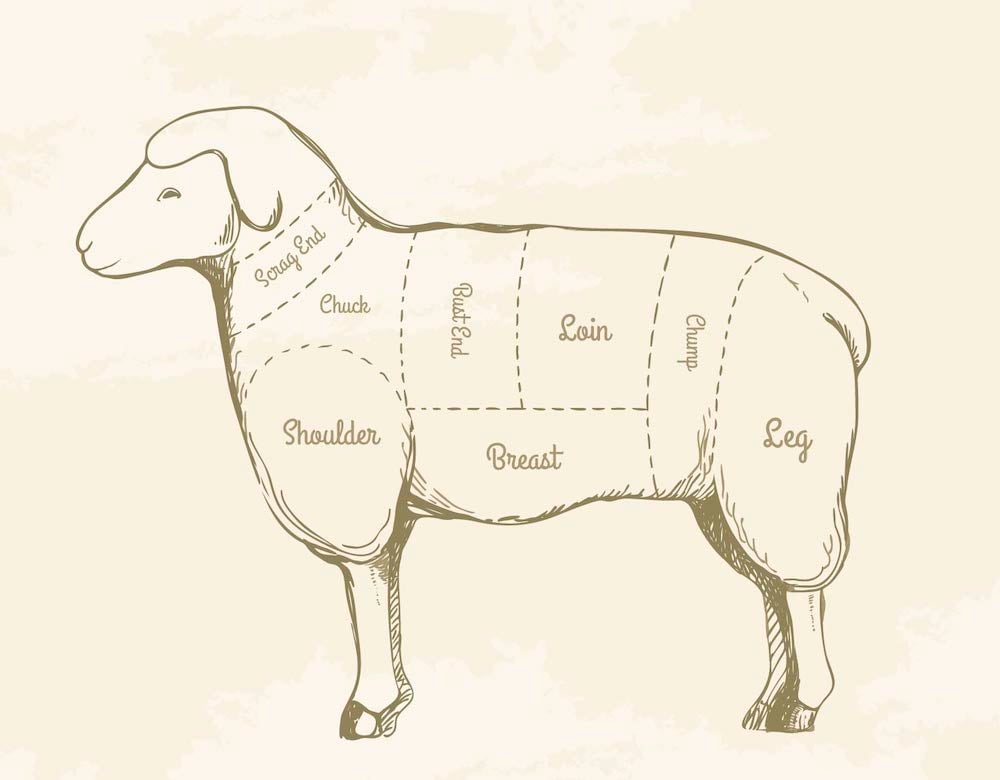
Lamb Flavor
Again, as a kid, I think my mom occasionally purchased mutton to save money. Mutton is an older sheep compared to a young lamb and would often taste gamey.
Lamb should not taste gamey. Yes, lamb will taste stronger than beef especially if it comes from New Zealand, but it shouldn’t taste gamey.
There are many comparisons between lamb raised in the United States versus lamb raised in New Zealand or Australia. Some say lamb from the mid-west is milder tasting than lamb from overseas.
That may be correct because US lamb is grass-fed but is sometimes finished with grain similar to how they finish cows. The grain in both cases is used to fatten them up before slaughter and adds more marbling to the meat.
The grain also leads to a milder lamb flavor. So depending on your own personal tastes, look for grain-finished lamb if you want milder flavor or grass-finished or New Zealand.
Cuts of Lamb
Let’s look at the different cuts of lamb and see which ones you are familiar with. Again, let’s start at the head or really the neck.
Neck
The lamb neck is a flavorful and budget-friendly cut that comes from the shoulder area, specifically the upper part of the animal’s neck. It is a tougher, more sinewy piece of meat, but its rich marbling and connective tissues give it a deep, savory flavor when cooked properly.
This cut is often overlooked, but it offers incredible potential for those willing to put in a little extra time and care. It is typically sold as a whole neck or in individual portions, such as neck chops or steaks.
Type of Meat
The lamb neck is a relatively tough cut due to its muscle structure, which undergoes considerable use. It has a lot of connective tissue, which can make it chewy if cooked incorrectly.
However, this also means that when slow-cooked or braised, the meat becomes melt-in-your-mouth tender as the collagen breaks down and transforms into rich, gelatinous goodness.
How to Cook Lamb Neck
Lamb neck requires slow, moist cooking methods to tenderize the meat and bring out its full flavor. It’s perfect for braising, stewing, or slow-roasting.
You can cook it low and slow in a Dutch oven or slow cooker with herbs, stock, and vegetables to create a hearty, flavorful dish. The long cooking time helps break down the muscle fibers, making the meat tender and juicy.
Lamb neck can also be used in curries or stews, where it absorbs the surrounding flavors.
For grilling, it’s best to use neck chops, which can be marinated and cooked on medium heat to retain their tenderness.
Shoulder
The lamb shoulder is a versatile and flavorful cut that comes from the upper front portion of the lamb, near the neck.
It’s a well-exercised area, meaning the meat can be tougher than more tender cuts, but it has a rich, full flavor and is highly marbled with fat. The fat adds moisture and depth of taste, making it ideal for slow-cooking methods that allow the meat to become incredibly tender.
Type of Meat
The lamb shoulder is a combination of both lean and fatty meat, with some connective tissue that requires longer cooking times to break down. The muscle structure makes it perfect for braising, stewing, or roasting, as the connective tissues and fat melt away during cooking, enriching the dish with flavor.
How to Cook Lamb Shoulder
Lamb shoulder can be prepared in a variety of ways, depending on how you want to serve it.
Slow Roasting: For a succulent roast, cook the shoulder whole at a low temperature for several hours. You can rub it with garlic, rosemary, and olive oil, and roast it until it’s tender enough to fall apart. This method works beautifully for a Sunday roast or a special family meal.
Braising or Stewing: Because the shoulder has tougher muscle fibers, braising is an excellent cooking method. Brown the meat first to develop flavor, then slow-cook it in a liquid like stock, wine, or tomato sauce with vegetables and herbs. After several hours of cooking, the shoulder will become incredibly tender and easy to pull apart, making it ideal for stews, curries, or pulled lamb dishes.
Grilling or BBQ: Shoulder chops or steaks can be grilled or barbecued for a quicker meal. Marinate the chops first for added flavor and tenderness, and cook them over medium heat to achieve a nice sear without overcooking the meat.
Regardless of the method, the lamb shoulder is a hearty, flavorful cut that is ideal for slow cooking to achieve a melt-in-your-mouth texture.
Breast
The lamb breast is a flavorful yet often underappreciated cut that comes from the lower chest area of the lamb. It’s a relatively fatty cut with a fair amount of connective tissue, making it quite rich and juicy when cooked properly.
The lamb breast is typically sold in a rolled and tied form, or as individual pieces, and it’s known for its layers of fat, which contribute to its flavor and tenderness when slow-cooked.
Type of Meat
The lamb breast is a combination of lean meat and fat, with a generous amount of marbling throughout. The fat makes the meat tender and flavorful when cooked slowly, but it can also make the cut greasy if not prepared with care.
The breast has a lot of connective tissue, which gives it a rich, full flavor, but also requires slow cooking to break down and become tender.
How to Cook Lamb Breast
Due to its high-fat content and tough texture, lamb breast benefits from slow, moist cooking methods. Here are a few of the best ways to cook it:
Slow Roasting: One of the most popular methods for lamb breast is roasting it low and slow. You can season the lamb breast with garlic, rosemary, and olive oil, then slow-roast it at a low temperature for several hours. The fat will render out, and the meat will become wonderfully tender and juicy. This is perfect for a holiday feast or a special family dinner.
Braising: Braising is another excellent method for cooking lamb breast. Brown the meat to develop flavor, then cook it slowly in a flavorful liquid (such as stock, wine, or a tomato-based sauce) along with vegetables and herbs. This method will help break down the tough connective tissue and allow the lamb to absorb all the rich flavors of the cooking liquid. After several hours, the lamb breast becomes meltingly tender and easy to pull apart.
Grilling: While grilling lamb breast is less common due to its fattiness, it can be done if cut into smaller pieces. To grill lamb breast, it’s best to marinate the meat beforehand to help tenderize it and add extra flavor. Grill over medium heat, turning frequently to avoid flare-ups from the fat, until it’s nicely browned and cooked to your liking.
The lamb breast is a flavorful cut that can become the star of a hearty, comforting meal when cooked correctly. Whether roasted, braised, or grilled, the result is a deliciously rich and tender dish that’s perfect for a special occasion or a comforting weeknight dinner.
Forshank
The lamb shank is a wonderfully flavorful, though tough, cut that comes from the lower leg of the lamb. It contains a lot of connective tissue and collagen, which makes it perfect for slow-cooking methods that break down the fibers, resulting in melt-in-your-mouth tenderness.
When cooked properly, lamb shanks are one of the most rewarding cuts of meat, offering rich, deep flavor and a luxurious texture.
Type of Meat
Lamb shanks are leaner than some other cuts, but they contain a significant amount of connective tissue, which contributes to their rich flavor. This tissue is ideal for braising or slow-roasting, as it breaks down during cooking to create a tender, juicy texture.
The muscle fibers in lamb shank are tougher, which is why it benefits from slow cooking, allowing the flavors to infuse the meat and transform it into a hearty, satisfying dish.
How to Cook Lamb Shank
Lamb shank is ideal for slow, moist cooking methods that help tenderize the meat and allow the flavor to develop over time. Here are the best ways to cook it:
Braising: Braising is the most popular method for cooking lamb shanks. Brown the shanks in a hot pan to develop a deep, caramelized flavor, then add a braising liquid such as stock, wine, or tomatoes, along with herbs and vegetables. Cover and cook on low heat for several hours, either on the stovetop or in the oven. The long cooking time helps break down the collagen and transforms the meat into a tender, flavorful dish. After braising, the meat should be falling off the bone.
Slow Roasting: Another great way to cook lamb shanks is by slow roasting. Season the shanks with your favorite herbs and spices, and roast them at a low temperature (around 300°F) for several hours. The slow roasting process allows the fat and connective tissue to melt, making the meat tender and juicy.
Slow Cooker or Crockpot: If you prefer an easy, hands-off method, you can cook lamb shanks in a slow cooker. Add the lamb, along with vegetables, herbs, and stock, and let it cook on low for 6-8 hours. The result is tender lamb shanks that fall off the bone, ready to be served with mashed potatoes, couscous, or polenta.
Grilling (for smaller pieces): Though less common, lamb shank can be grilled if cut into smaller pieces. You’ll need to marinate it first to tenderize the meat and infuse flavor. Grill over indirect heat to cook it slowly, or use a two-zone grilling method to ensure it doesn’t dry out.
The lamb shank is a fantastic choice for a special dinner or a cozy, comforting meal. When cooked slowly and properly, it delivers an incredible depth of flavor and a melt-in-your-mouth texture that makes it well worth the wait.
Whether braised, roasted, or slow-cooked, lamb shank is guaranteed to be a showstopper.
Ribs
The lamb rib is one of the most tender and flavorful cuts of lamb, coming from the rib section of the animal. Known for its rich flavor and excellent texture, the lamb rib is highly prized for its versatility in cooking and its ability to be prepared in a variety of ways, from elegant dinner parties to casual barbecues.
Type of Meat
Lamb ribs are made up of tender meat and bones, with a good amount of fat marbling, which helps keep the meat juicy and flavorful when cooked. The ribs themselves are leaner than some cuts, but still offer plenty of richness thanks to the fat and connective tissue that give it that signature lamb flavor. The ribs are typically sold as either rack of lamb (a full rack with 8 bones) or lamb rib chops (individual bone-in pieces).
How to Cook Lamb Ribs
Lamb ribs are incredibly versatile and can be cooked using different methods depending on your preference for flavor and texture.
Roasting: One of the most popular methods is roasting a full rack of lamb. This cut is often seasoned with herbs, garlic, and olive oil, then roasted at a high temperature for a short period (usually 20-30 minutes) to achieve a perfectly pink and tender interior with a crispy, caramelized exterior. For a truly show-stopping presentation, you can French the bones (trim them clean of meat and fat) for a restaurant-quality look.
Grilling: Lamb rib chops are perfect for grilling. You can marinate the chops or simply season them with salt, pepper, and your favorite herbs, then grill them over high heat for about 3-5 minutes per side, depending on how rare or well-done you prefer them. Grilled lamb ribs are flavorful and easy to prepare, making them a great choice for summer cookouts.
Braising: If you prefer a tender, fall-off-the-bone result, braising lamb ribs is another great option. Brown the ribs in a hot pan, then slow-cook them in a flavorful liquid such as stock, wine, or a tomato-based sauce with herbs and vegetables. The slow cooking time helps break down the collagen and tenderizes the meat, resulting in a rich and succulent dish.
Barbecuing: For a smoky, bold flavor, you can barbecue lamb ribs by seasoning them with a dry rub or marinade and slow-cooking them over indirect heat. This method works particularly well for lamb spare ribs or lamb ribscut into individual pieces. The low and slow cooking process allows the meat to absorb the smoky flavors and become incredibly tender.
Lamb ribs are a flavorful and versatile cut that can be used in a variety of cooking methods, making them a popular choice for many home cooks and chefs alike.
Whether roasted, grilled, braised, or barbecued, they deliver a tender, rich flavor that pairs well with everything from simple sides to more complex sauces and accompaniments. Perfect for special occasions or casual meals, lamb ribs are sure to impress.
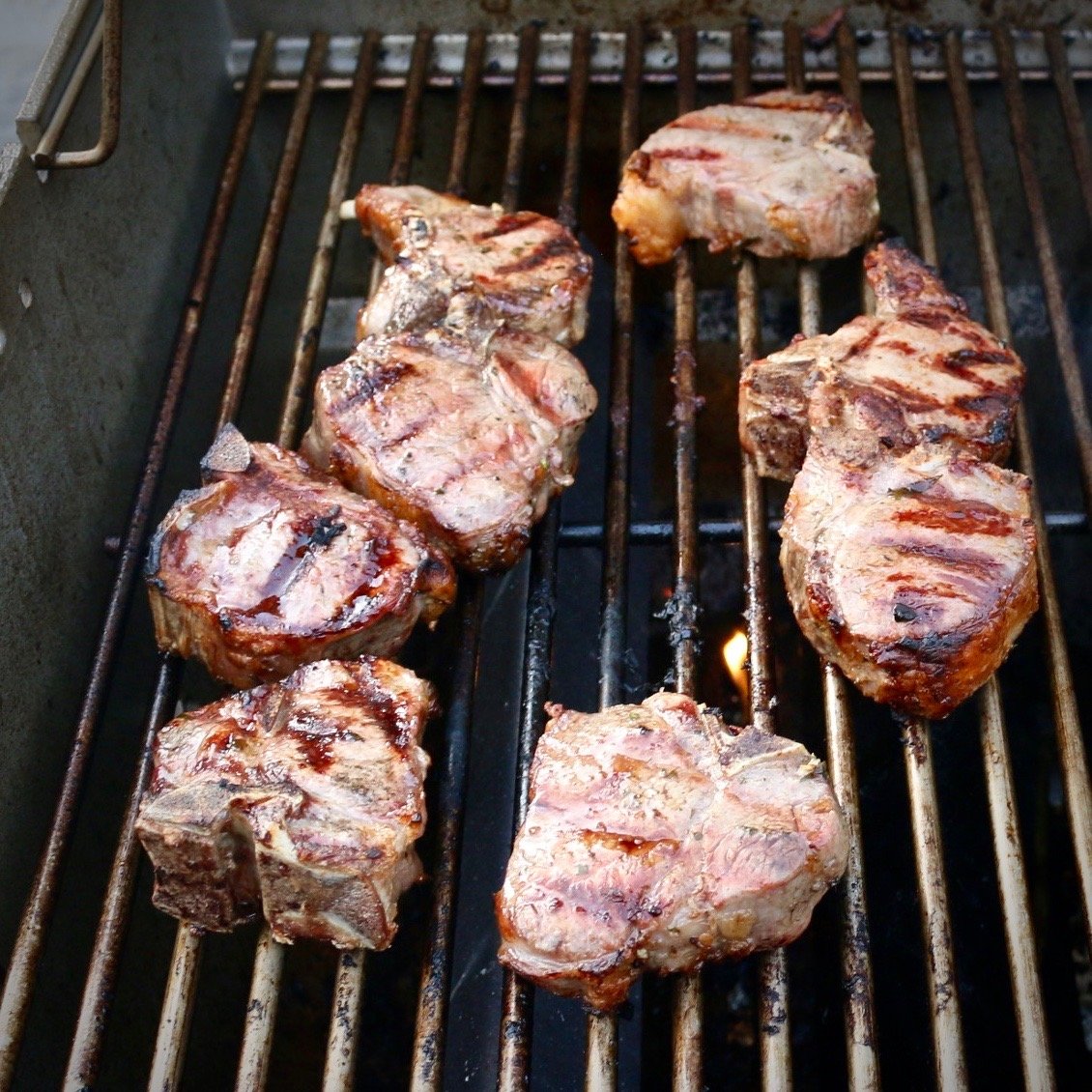
Loin
The lamb loin is one of the most tender and sought-after cuts of lamb, known for its delicate texture and rich flavor. It’s located along the back of the lamb, between the rib and the sirloin.
The loin is often considered the equivalent of a beef tenderloin, prized for its tenderness and mild, succulent flavor. The meat from the lamb loin is lean, with a minimal amount of fat, which contributes to its softness and tenderness when cooked properly.
Type of Meat
The lamb loin is a tender, lean cut with very little connective tissue, making it one of the easiest cuts to cook. It contains muscles that don’t get much exercise, so the meat is smooth, juicy, and flavorful without being tough.
The loin can be purchased as a whole loin, which is often sold with the bones still in, or it can be cut into individual lamb loin chops, which are small, tender, bone-in portions that are perfect for grilling or pan-searing.
How to Cook Lamb Loin
Lamb loin is incredibly versatile and can be cooked in a variety of ways, each method bringing out the meat’s natural tenderness and mild flavor.
Roasting: One of the most popular methods for cooking a whole lamb loin is roasting. You can season it with a simple rub of garlic, rosemary, thyme, and olive oil, then roast it at a high temperature (around 400°F) for 20-30 minutes, depending on the size of the loin and your preferred level of doneness. The result is a perfectly cooked roast with a golden, crispy exterior and a tender, juicy interior.
Pan-Seared or Grilled Loin Chops: Lamb loin chops are perfect for grilling or pan-searing. Simply season them with salt, pepper, and your favorite herbs, then sear them over medium-high heat in a hot pan or on a grill for about 3-5 minutes per side. This method results in a tender, juicy chop with a crispy exterior. Serve the chops with a side of roasted vegetables or a fresh salad for an elegant and easy meal.
Braising: While braising is not the most common method for cooking lamb loin due to its natural tenderness, you can still braise it if you prefer a slower cooking method. Braising works best for lamb loin if it’s cut into smaller pieces or chunks, as this will help break down any remaining connective tissue. Braise the meat in a flavorful liquid, such as wine or stock, along with vegetables and herbs for a rich, flavorful dish.
Sous Vide: For perfectly tender lamb loin, sous vide is another excellent option. Season the loin and vacuum-seal it in a bag, then cook it in a water bath at 135°F (or your desired temperature) for about 1.5 to 2 hours. After cooking, sear the loin quickly in a hot pan for a golden crust. This method ensures the meat is cooked evenly and retains its natural juiciness.
Lamb loin is a top-tier cut that delivers exceptional flavor and texture. Whether you roast it whole, sear individual chops, or experiment with other cooking methods, the lamb loin is sure to impress with its tenderness and mild, succulent flavor. Whether served at a special occasion or as part of a weeknight meal, lamb loin is a versatile and crowd-pleasing choice.
Flank
The lamb flank is a flavorful, yet often overlooked cut that comes from the lower abdomen of the lamb. It’s a lean and muscular section of meat, known for its rich flavor and slightly tougher texture compared to more tender cuts like the loin or rack.
The flank is not as fatty, but it has a noticeable grain, which makes it perfect for marinating and using in dishes where the meat can be sliced against the grain to maximize tenderness.
Type of Meat
The lamb flank is a lean cut with a noticeable muscle structure, which gives it a slightly chewy texture if not cooked properly. It’s a relatively thin cut, but its strong flavor makes it a great option for dishes that require a bit more depth.
While the meat isn’t as naturally tender as cuts like the loin or rack, its richness and texture make it ideal for marinating or slow-cooking.
How to Cook Lamb Flank
Because lamb flank is lean and a bit tougher than some other cuts, it benefits from being cooked quickly at high heat or slow-cooked to break down the muscle fibers. Here are the best ways to cook lamb flank:
Grilling: Lamb flank is perfect for grilling. Marinate the flank steak for several hours or overnight to help tenderize the meat and infuse flavor. Once marinated, grill the flank steak over medium-high heat for 4-6 minutes per side, depending on the thickness of the cut and your desired level of doneness. After grilling, let the meat rest before slicing it thinly against the grain. This method results in flavorful, slightly charred meat with a tender texture when sliced correctly.
Pan-Seared: You can also pan-sear lamb flank for a quick and flavorful meal. Season the meat with salt, pepper, and herbs, then sear it in a hot pan with some olive oil for about 3-4 minutes per side. For best results, let the meat rest for a few minutes before slicing. This method will give you a nice sear on the outside while keeping the interior juicy.
Slow Cooking or Braising: If you prefer a more tender and flavorful result, slow cooking or braising the lamb flank is an excellent option. Brown the meat in a hot pan, then slow-cook it in a flavorful liquid (such as wine, stock, or tomatoes) along with vegetables and herbs. The slow cooking process will break down the tougher fibers and leave you with a rich, tender cut of lamb that is perfect for stews, curries, or braised dishes.
Stir-Frying: Since lamb flank has a strong grain, it’s also great for stir-frying when sliced thinly. Marinate the meat, then cook it quickly in a hot wok or skillet with vegetables and a savory sauce for a fast and flavorful meal.
Lamb flank is a cut that benefits from either quick, high-heat cooking methods like grilling or pan-searing, or slow cooking to allow the muscle fibers to break down.
Whether grilled, seared, or braised, the lamb flank is an affordable and flavorful cut that can be used in a variety of dishes. When prepared correctly, it’s a fantastic addition to any meal.
Sirloin
The lamb sirloin is a tender and flavorful cut that comes from the rear part of the lamb, just above the leg and below the loin. It’s a versatile cut that offers a great balance of tenderness and rich lamb flavor.
While it’s not as widely known as some other cuts, it’s prized for its texture and versatility, making it perfect for a range of cooking methods, from grilling to roasting.
Type of Meat
The lamb sirloin is relatively lean compared to fattier cuts like the shoulder or breast, but it’s still tender, with a bit of fat marbling that keeps the meat moist and flavorful when cooked.
This cut has a good mix of muscle and fat, which results in a juicy and delicious eating experience. It’s a great choice for those who enjoy lamb but prefer a leaner option than some of the more fatty cuts.
How to Cook Lamb Sirloin
Lamb sirloin is versatile and can be cooked using a variety of methods, though it benefits from high-heat, quick cooking to preserve its tenderness and juiciness. Here are the best ways to cook lamb sirloin:
Grilling: One of the best methods for cooking lamb sirloin is grilling. The sirloin can be cut into steaks or left as a whole roast, depending on the desired portion size. Simply season the sirloin with salt, pepper, and your favorite herbs (such as rosemary or thyme), and grill it over medium-high heat for about 3-5 minutes per side, depending on the thickness of the meat and how well-done you prefer it. Grilled lamb sirloin develops a flavorful crust while maintaining a tender and juicy interior.
Pan-Seared: For a quick and easy option, pan-searing is perfect for lamb sirloin steaks. Heat a little oil in a pan over medium-high heat, and sear the steaks for 3-5 minutes per side. Let the meat rest after cooking to allow the juices to redistribute, then slice and serve. You can also finish the meat in the oven if you prefer a more evenly cooked steak. Pan-searing provides a beautifully caramelized exterior while keeping the inside tender and juicy.
Roasting: If you prefer a whole roast, lamb sirloin can be roasted in the oven. Season the roast with garlic, rosemary, thyme, and olive oil, then roast it in the oven at around 375°F for 20-30 minutes, depending on the size of the cut and your preferred level of doneness. This method allows the fat to render and infuse the meat with flavor, resulting in a juicy, tender roast with a crisp, golden exterior.
Sous Vide: For perfectly tender lamb sirloin, sous vide cooking is an excellent choice. Vacuum-seal the lamb sirloin with seasonings, then cook it in a water bath at 130°F for 1-2 hours. After cooking, sear the outside in a hot pan for a crispy finish. This method guarantees a consistent level of doneness throughout the meat and preserves its natural moisture and tenderness.
Stir-Frying: While less common, lamb sirloin can also be sliced thinly and used in stir-fries. Marinate the meat for extra flavor, then cook it quickly in a hot wok with vegetables and a savory sauce. This results in a flavorful, tender dish in a short amount of time.
The lamb sirloin is a great option for those looking for a tender, flavorful cut that’s not too fatty but still has great flavor.
Whether grilled, pan-seared, roasted, or even cooked sous vide, it’s a versatile cut that can be used in many different dishes, making it a great choice for a weeknight dinner or a special occasion.
Leg
The lamb leg is one of the most popular and versatile cuts of lamb, known for its rich flavor and tenderness. It’s a large, primal cut that comes from the rear leg of the lamb, and it’s often sold as a whole leg, either bone-in or boneless.
The leg of lamb is prized for its tenderness, especially when slow-cooked, and it’s perfect for roasting, grilling, or braising.
Type of Meat
The lamb leg is a lean cut with a good amount of muscle, making it both flavorful and tender. The leg can be a bit tougher when cooked quickly, but with the right methods, it becomes extremely juicy and succulent.
The meat has a distinct, robust flavor that lamb is known for, and it’s often the centerpiece of holiday dinners or special occasions. The leg is composed of various muscles, and depending on whether you purchase it bone-in or boneless, the cut can vary in terms of ease of preparation.
How to Cook Lamb Leg
The lamb leg is a versatile cut that can be cooked in many ways, but it is especially well-suited for slow roasting, grilling, and braising. Here are some of the best methods to cook lamb leg:
Roasting: Roasting a whole leg of lamb is one of the most classic methods. For a bone-in leg, season it generously with garlic, rosemary, thyme, salt, pepper, and olive oil. Roast it at 375°F for about 1.5 to 2 hours, depending on the size of the leg and your desired level of doneness (around 20 minutes per pound for medium-rare). If you’re using a boneless leg, it may cook a bit faster. Roasting the leg gives it a nice, crispy exterior while keeping the inside tender and juicy. Let the roast rest for 15 minutes before slicing to retain the juices.
Grilling: For a smoky, flavorful leg of lamb, grilling is an excellent option, particularly for boneless legs or leg steaks. Marinate the lamb in olive oil, garlic, lemon, and herbs before grilling. Grill the leg over medium-high heat for about 20-30 minutes, turning it occasionally to ensure even cooking. For a more dramatic presentation, you can butterfly the leg of lamb (cut it open and flatten it) and grill it like a steak, which makes for quicker cooking and a more even result.
Braising: If you want to cook a lamb leg in a way that yields super tender, fall-off-the-bone meat, braising is an ideal method. Brown the lamb leg in a hot pan, then place it in a Dutch oven or slow cooker with aromatics (onions, garlic, carrots, celery), herbs, and a flavorful liquid like red wine or stock. Cover and cook on low heat for 2.5 to 3 hours (or in the oven at 325°F) until the meat is fork-tender. Braised lamb leg is perfect for shredding and serving in stews, tacos, or sandwiches.
Sous Vide: For the ultimate in tenderness, sous vide is an excellent way to cook a lamb leg. Season the leg and vacuum-seal it in a bag. Then cook it in a water bath at 135°F for 6 to 8 hours for a medium-rare result. After cooking, sear the lamb leg in a hot pan for a crispy, caramelized exterior. This method produces perfectly even, tender meat throughout, with the juices locked in.
Spit Roasting: For a dramatic and festive preparation, you can spit-roast a whole leg of lamb, which involves slow-roasting it over an open flame or in an oven on a rotisserie. This method imparts a smoky, charred flavor and ensures that the lamb remains juicy and tender.
Lamb leg is a versatile cut that lends itself to many cooking techniques, and it’s especially suited for slow cooking.
Whether you’re roasting, grilling, braising, or sous vide cooking, the lamb leg delivers a tender, flavorful result that can be the star of your meal. This cut is perfect for special occasions, family dinners, or any time you want to impress with a succulent, rich lamb dish.
Hindshank
The hindshank is a flavorful, but less commonly used cut of lamb that comes from the lower portion of the hind leg, just below the knee joint.
It’s a tougher, sinewy cut of meat that contains a good amount of connective tissue, which gives it a rich flavor when cooked properly. While it may not be as tender as cuts like the loin or leg, the hind shank’s deep flavor and hearty texture make it perfect for slow-cooking methods.
Type of Meat
The lamb hindshank is a lean, tough cut with lots of connective tissue and collagen. The meat is flavorful, but it requires slow cooking to break down the tough fibers and turn the meat tender.
Due to its muscular structure, it’s often used in braised dishes or slow-cooked stews, where the long cooking times allow the collagen to melt into a rich, flavorful sauce, making the meat incredibly tender.
How to Cook Lamb Hindshank
The hindshank benefits from slow, moist cooking methods, which help tenderize the meat and infuse it with flavor. Here are the best ways to cook lamb hindshank:
Braising: Braising is the best method for cooking lamb hindshank. The slow cooking process allows the connective tissue to break down and results in melt-in-your-mouth tenderness. To braise, season the hindshank with salt, pepper, and your favorite herbs, then brown it in a hot pan. After searing, transfer the shank to a Dutch oven or slow cooker, add aromatics like onions, garlic, and carrots, and pour in a flavorful liquid such as stock, wine, or a combination. Cover and cook the shank at a low temperature (around 300°F in the oven or 6-8 hours on low in a slow cooker) for 2.5 to 3 hours, or until the meat is fork-tender.
Slow Cooker: If you want a hands-off cooking approach, the slow cooker is a perfect option for hindshanks. Season the meat and brown it in a pan to develop flavor, then transfer it to the slow cooker with vegetables, herbs, and liquid. Set the slow cooker to low and cook for 6 to 8 hours. The result will be incredibly tender lamb with a rich, savory sauce.
Stewing: Lamb hindshank is also great in stews. After browning the meat, add it to a pot with broth, vegetables, and herbs, and let it simmer for a couple of hours until the meat is tender. The collagen-rich nature of the hindshank adds a wonderful richness to the stew, creating a hearty, flavorful dish.
Oven Roasting: If you prefer a roasted dish, lamb hindshank can also be roasted low and slow. You can roast it in the oven at around 300°F for 2-3 hours, or until the meat is tender. A marinade of garlic, rosemary, and olive oil helps infuse the meat with flavor, and basting occasionally helps keep the meat moist.
Grilling: While grilling isn’t the best option for hindshank due to its toughness, you can use a reverse-sear method. First, slow-cook the hindshank until it’s nearly tender, and then finish it on the grill for a crispy, charred exterior. This method is less common but can add a unique flavor to the meat.
The lamb hindshank is ideal for long, slow-cooking methods like braising, slow cooking, or stewing. This allows the tough connective tissue to break down, making the meat tender and flavorful.
Whether served as a hearty stew or braised to perfection, lamb hindshank is an excellent option for comfort food dishes, particularly in colder months or for special occasions when you want to serve a rich, flavorful dish.
How to Butcher an Entire Lamb: Every Cut of Meat Explained
This is my current favorite video showing a complete lamb fabrication, showing all the cuts, including those you are familiar with and those you may not know. If you see something in the video you’ve never tried, be sure to speak with your butcher to see if they can get that cut for you.
This video shows butcher Justin Williams from Harlem Shambles and Handcrafted. One of the best you’ll find. You’ll see all the cuts I list above in vivid detail. Justin makes it look so easy, but I recommend you let your butcher do the butchering for you.

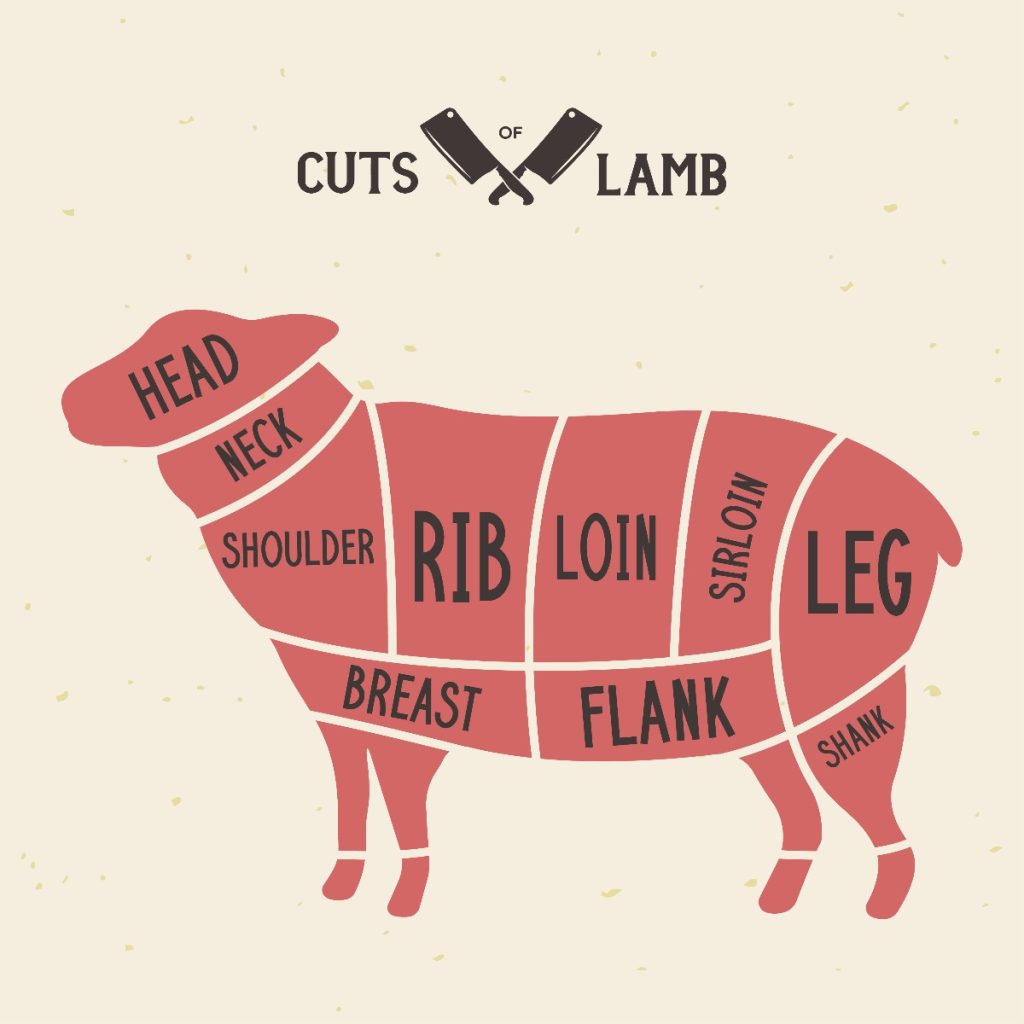
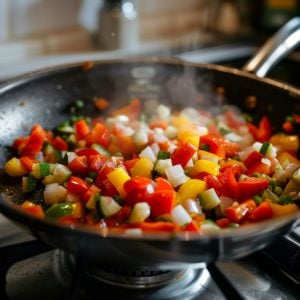
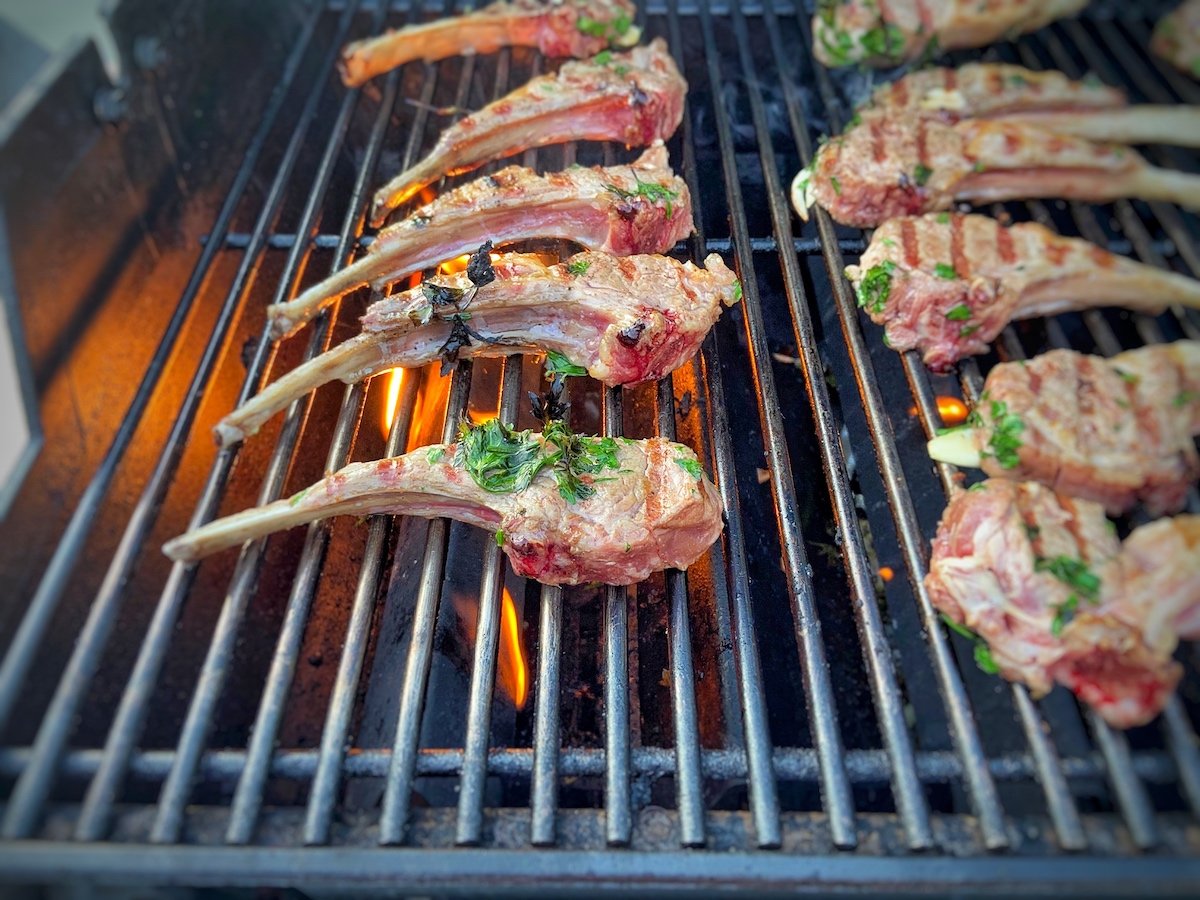
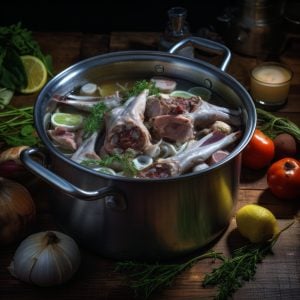
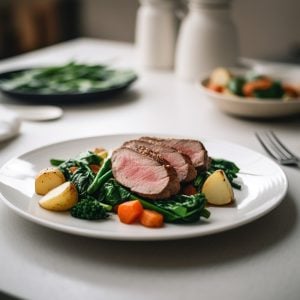
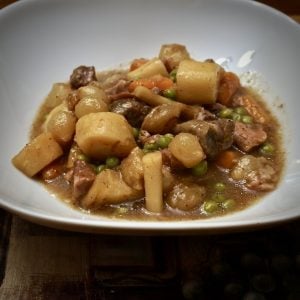
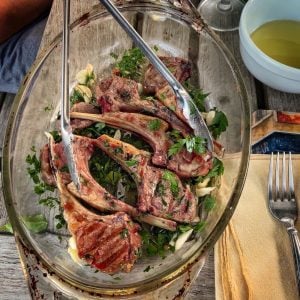
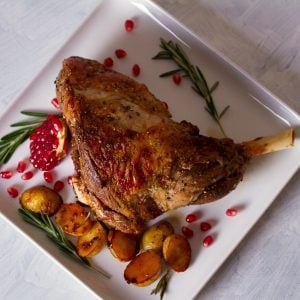
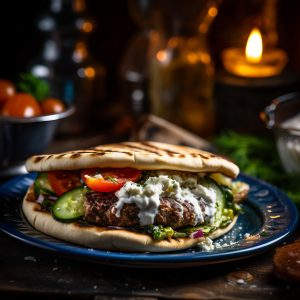
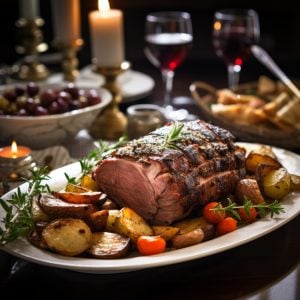
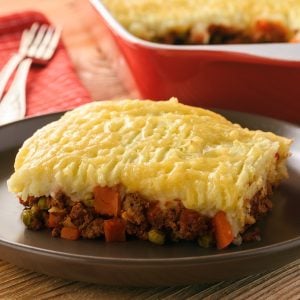

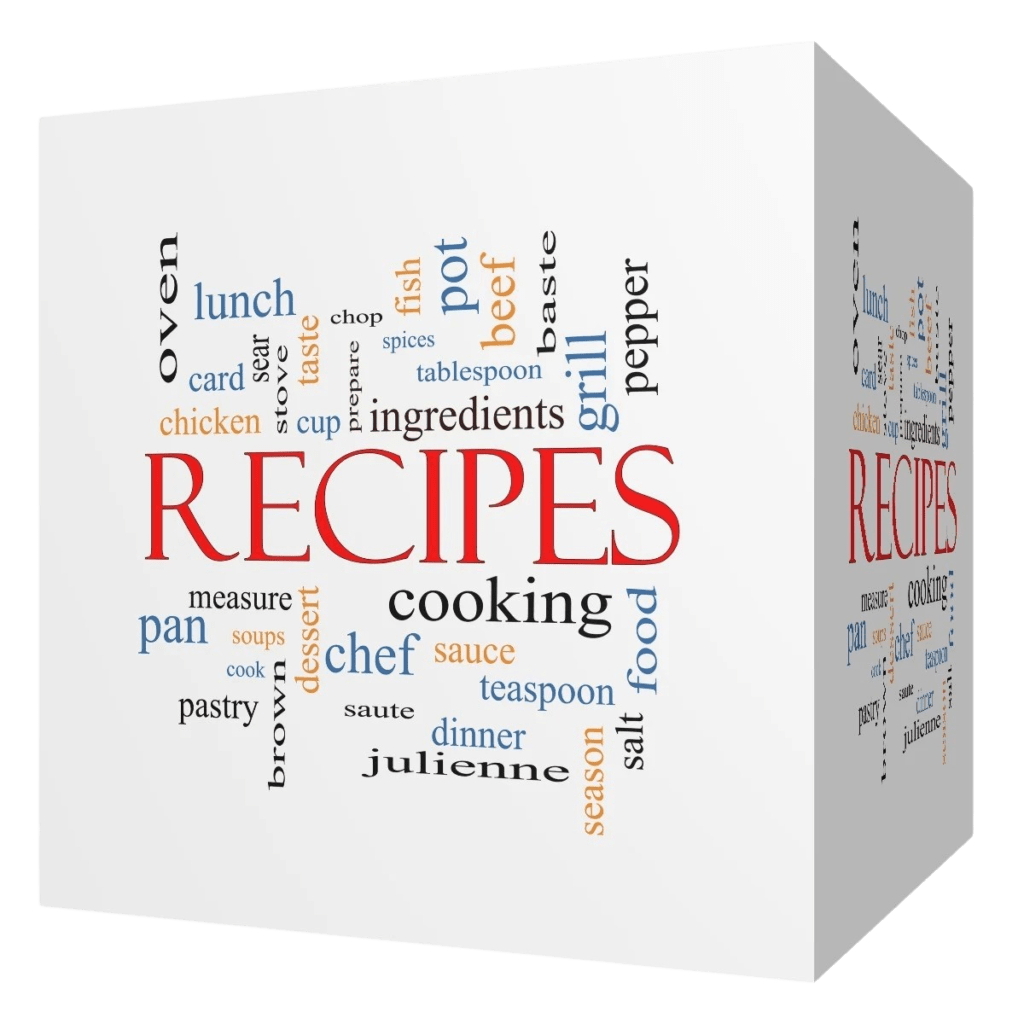
2 Responses
Thank you so much for this. It explains clearly the difference between the shoulder cut in the US vs UK. I was not happy when I bought home my first shoulder from a US supermarket. More bone less meat. (Called square cut). Still a good cut for slow roasting tho.
You are welcome Heather. Thanks for reaching out.